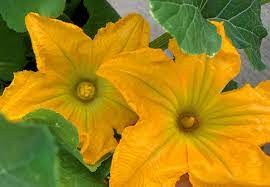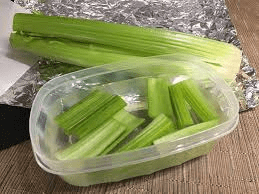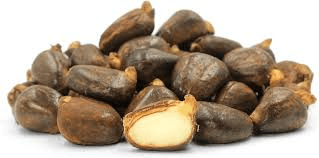Tangerine and Mandarin Leaves: Economic Importance, Uses and By-Products
Tangerine and mandarin leaves are components of citrus trees that belong to the Rutaceae family. These leaves are known for their aromatic properties and are often used in various cultural practices, including traditional medicine, aromatherapy, and perfumery. Here’s a description of tangerine and mandarin leaves:
Tangerine leaves are glossy, dark green leaves that grow on tangerine trees (Citrus reticulata). These trees are small to medium-sized evergreens that produce small, sweet citrus fruits known as tangerines. Tangerine leaves are lance-shaped with a slightly serrated edge, and they often exude a delightful citrusy fragrance when crushed or brushed against. The aroma is similar to the scent of tangerine fruit, characterized by its tangy, sweet, and slightly floral notes.
Tangerine leaves are sometimes used in culinary applications to infuse dishes with a subtle citrus essence, and they also find their way into herbal teas and potpourris.
Mandarin leaves are very similar in appearance to tangerine leaves, as both tangerines (Citrus reticulata) and mandarins belong to the same species. The distinction between the two is often more related to regional terminology rather than significant botanical differences. Mandarin trees are also small evergreens that bear small, sweet citrus fruits. The leaves are lance-shaped with a glossy texture and a deep green color.
When crushed, mandarin leaves emit a fragrance reminiscent of the mandarin fruit—a fresh, citrusy aroma that is both invigorating and soothing. Like tangerine leaves, mandarin leaves are sometimes utilized for their aromatic qualities in various applications, from teas to essential oil production.
Both tangerine and mandarin leaves are part of the overall sensory experience associated with citrus trees. Their aromatic properties are a result of the presence of essential oils and other volatile compounds within the leaves. These compounds contribute to the characteristic scents that are closely associated with the citrus family. Whether used for their fragrance, flavor, or potential therapeutic benefits, tangerine and mandarin leaves are valued elements of the diverse world of citrus.
The Economic Importance and Uses of Tangerine and Mandarin Leave

Tangerine and mandarin leaves have several economic and practical uses, although they are not as commonly utilized as the fruit itself.
Here are some of the economic importance and uses of tangerine and mandarin leaves:
1. Aromatic and Medicinal Uses: Tangerine and mandarin leaves contain essential oils that give off a pleasant fragrance. These oils can be extracted and used in the production of perfumes, cosmetics, and aromatherapy products. Additionally, the leaves have traditional medicinal uses in some cultures, believed to have properties that promote relaxation and relieve stress.
2. Herbal Teas: Dried tangerine and mandarin leaves can be used to make herbal teas. These teas are thought to have various health benefits, including aiding digestion, boosting immunity, and providing antioxidants. The teas are sometimes consumed for their soothing and calming effects.
3. Flavoring Agents: Tangerine and mandarin leaves can be used as natural flavoring agents in culinary applications. They can be added to dishes to impart a subtle citrusy flavor. Leaves can be used fresh or dried, and they work well in both savory and sweet recipes.
Read Also: Tangerine and Mandarin Trunk: Economic Importance, Uses and By-Products
4. Traditional Medicine: In some traditional medicine systems, tangerine and mandarin leaves are used in various preparations to treat ailments such as colds, coughs, and digestive issues. While scientific evidence may be limited, these uses have been passed down through generations in certain cultures.
5. Cosmetics and Skincare: Extracts from tangerine and mandarin leaves can be incorporated into skincare and cosmetic products due to their potential antioxidant and soothing properties. These extracts might be used in products such as lotions, creams, and facial masks.
6. Natural Dyes: The leaves contain natural pigments that can be used as dyes for fabrics and other materials. These dyes can produce earthy shades of yellow and brown.
7. Fragrance Industry: The essential oils derived from tangerine and mandarin leaves can find application in the fragrance industry, used to create unique scents for perfumes, colognes, and other personal care products.
8. Handicrafts and Potpourri: Dried tangerine and mandarin leaves can be incorporated into crafts, such as making potpourri sachets. The leaves’ fragrance can help maintain the aroma of the potpourri mix.
9. Livestock Feed: In some cases, tangerine and mandarin leaves might be used as supplementary livestock feed. However, this usage is less common and might depend on local agricultural practices.
The Products and By-products That Can Be Derived From Tangerine and Mandarin Leaves

Tangerine and mandarin leaves, like many other plant materials, contain various compounds that can be utilized in different products and by-products.
Here are some potential products and by-products that can be derived from tangerine and mandarin leaves:
1. Essential Oils: Tangerine and mandarin leaves contain essential oils, which are concentrated liquids containing aromatic compounds. These oils can be extracted through processes like steam distillation or cold-pressing. Tangerine and mandarin essential oils are valued for their pleasant citrusy aroma and potential therapeutic properties. They are often used in perfumes, aromatherapy, and natural skincare products.
2. Flavorings and Fragrances: The essential oils extracted from tangerine and mandarin leaves can be used as natural flavorings and fragrances in the food, beverage, and cosmetics industries. They can enhance the taste and scent of products such as candies, beverages, and personal care items.
3. Cosmetics and Skincare Products: The essential oils and other compounds found in tangerine and mandarin leaves have potential benefits for the skin. They can be incorporated into lotions, creams, soaps, and other skincare products for their potential antioxidant, anti-inflammatory, and moisturizing properties.
4. Aromatherapy Products: The pleasant and uplifting aroma of tangerine and mandarin essential oils makes them popular choices for aromatherapy. They can be used in diffusers, massage oils, and other aromatherapy products to promote relaxation and emotional well-being.
5. Herbal Teas: Tangerine and mandarin leaves can be dried and used as an ingredient in herbal teas. These teas may have a mild citrus flavor and could potentially offer some of the health benefits associated with citrus fruits, such as vitamin C and antioxidants.
6. Natural Pesticides and Repellents: Compounds found in tangerine and mandarin leaves could potentially have insecticidal or repellent properties. These leaves could be used to create natural pest control solutions for gardening and agriculture.
Read Also: Tangerine and Mandarin Roots: Economic Importance, Uses and By-Products
7. Compost and Fertilizer: After the extraction of essential oils, the leftover plant material can be composted. This compost can enrich soil with organic matter and nutrients, acting as a natural fertilizer for plants.
8. Animal Feed Additives: Some compounds in tangerine and mandarin leaves might have potential uses as additives in animal feed. However, thorough research would be needed to ensure the safety and efficacy of such applications.
9. Biodegradable Packaging and Materials: Some compounds present in tangerine and mandarin leaves may have potential as natural additives for creating biodegradable packaging materials or bioplastics. This could contribute to reducing the environmental impact of conventional plastics.
10. Natural Dyes: The leaves of tangerine and mandarin trees might contain pigments that could be used as natural dyes for textiles, paper, and other materials. These dyes could offer a sustainable and eco-friendly alternative to synthetic dyes.
11. Medicinal Extracts: Compounds found in the leaves could potentially have medicinal properties. Traditional medicine systems might use extracts from tangerine and mandarin leaves to create remedies for various ailments. However, rigorous scientific research would be needed to validate any potential health benefits.
12. Bioactive Compounds for Pharmaceuticals: Certain bioactive compounds found in tangerine and mandarin leaves could be investigated for their potential use in pharmaceuticals. These compounds might have properties that could be harnessed for developing new drugs or therapies.
13. Agricultural and Horticultural Applications: Extracts from tangerine and mandarin leaves could be explored for their potential in enhancing plant growth, disease resistance, and crop yield. They might also have applications as natural plant growth regulators.
14. Nutritional Supplements: If the leaves contain significant nutritional compounds, they could be processed into supplements. However, this would require thorough analysis to determine their nutritional content and safety for human consumption.
15. Biofuel Production: Some research has explored the potential of citrus leaves, including tangerine and mandarin leaves, as a source of biofuels. The cellulose and other organic materials in the leaves could be converted into biofuels through various processes.
16. Natural Insecticides and Repellents: Extracts from tangerine and mandarin leaves could be formulated into natural insecticides or repellents for both household and agricultural use.
17. Art and Craft Supplies: Dried leaves might find use in creative projects such as making handmade paper, pressed leaf art, or natural crafts.
In conclusion, it is important to note that the economic importance and uses of tangerine and mandarin leaves can vary depending on cultural preferences, regional practices, and available technologies. While these uses exist, not all of them are equally widespread or economically significant. Always ensure that the use of plant materials is sustainable and in compliance with local regulations.
Read Also: A Comprehensive Guide To Circular Economy Consulting









